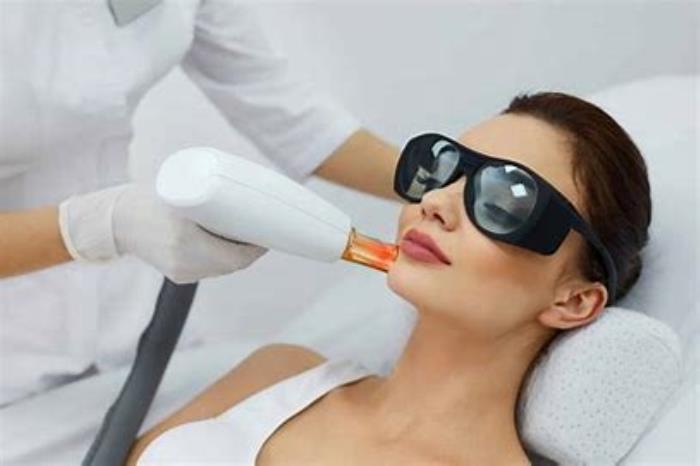Facelift surgery, or rhytidectomy, is a cosmetic procedure aimed at reducing the visible signs of aging in the face and neck. It involves the removal of excess skin and the tightening of underlying tissues to restore a more youthful appearance. As aesthetic standards evolve, many patients are seeking ways to enhance their surgical results. Laser treatments have emerged as a complementary option to facelift surgery, offering additional benefits such as improved skin texture and tone.
Combining these two approaches allows for a more comprehensive rejuvenation of the facial appearance, addressing not just sagging skin but also issues related to pigmentation, scars, and uneven texture. By integrating laser technology into facelift surgery, patients can achieve more balanced and natural-looking outcomes.
Benefits of Combining Facelift Surgery with Laser Treatments
Combining facelift surgery with laser treatments offers numerous advantages for patients seeking to rejuvenate their appearance. One significant benefit is the enhanced overall results; while a facelift tightens and lifts the skin, laser treatments can address surface imperfections, leading to smoother, more radiant skin.
Additionally, the combination can reduce recovery time. Laser treatments can accelerate healing by stimulating collagen production, which helps to restore skin elasticity and texture. This synergy not only improves aesthetic outcomes but also ensures that patients enjoy a more comfortable recovery process with less visible downtime.
Understanding the Different Types of Laser Treatments
There are various types of laser treatments available, each tailored to address specific skin concerns. The most common categories include ablative and non-ablative lasers. Ablative lasers, such as CO2 and Erbium YAG lasers, remove the outer layer of skin to promote new skin growth, making them ideal for treating deep wrinkles, severe sun damage, and scars.

Non-ablative lasers, like fractional laser and Nd lasers, penetrate the skin without damaging its surface, making them suitable for addressing fine lines, pigmentation, and overall skin tone. Understanding these options enables patients to choose the most appropriate treatment based on their unique needs and desired outcomes.
How Laser Technology Enhances Facelift Results
Laser technology plays a crucial role in enhancing the results of facelift surgery by addressing skin quality issues that surgical techniques alone may not resolve. After a facelift, many patients may still have concerns regarding skin texture, pigmentation, or fine lines. Laser treatments can specifically target these issues, creating a more polished and youthful appearance.
By applying laser treatments post-surgery, patients can experience improved skin tightness and a reduction in the visibility of scars, leading to a more uniform and revitalized facial contour. This complementary approach results in more comprehensive rejuvenation, helping patients achieve their aesthetic goals.
Laser Resurfacing: Improving Skin Texture and Tone
Laser resurfacing is a popular option for individuals looking to improve skin texture and tone following facelift surgery. This procedure utilizes focused laser energy to remove damaged skin cells, promoting collagen production and encouraging the growth of new, healthy skin.

Patients can benefit from smoother skin, reduced fine lines, and an overall more even complexion. The recovery time for laser resurfacing is generally shorter than that for traditional resurfacing techniques, allowing patients to enjoy the benefits of improved skin quality without significant downtime. By incorporating laser resurfacing into their post-facelift regimen, patients can enhance their surgical results and achieve a more youthful appearance.
The Role of Fractional Lasers in Facial Rejuvenation
Fractional lasers have emerged as a pivotal technology in facial rejuvenation, offering patients a non-invasive option to improve skin texture and tone. By targeting specific areas of the skin with micro-beams of laser energy, these devices promote collagen remodeling while minimizing damage to surrounding tissue. This results in enhanced skin elasticity and a reduction in fine lines, wrinkles, and sun damage. The versatility of fractional lasers allows them to be used in conjunction with facelift surgeries, enhancing overall aesthetic outcomes and providing patients with a more youthful appearance.

Minimizing Scarring: Laser Treatments in Facelift Surgery
Laser treatments play a crucial role in minimizing scarring associated with facelift surgery. By utilizing laser technology, surgeons can make smaller incisions and promote better healing, resulting in finer scars that are less noticeable. Additionally, lasers can help with the postoperative treatment of scars, promoting collagen production and improving skin texture around the incision sites. This dual approach not only enhances the aesthetic results of the facelift but also empowers patients with greater confidence in their healing process.
Enhancing Collagen Production Post-Facelift
Enhancing collagen production post-facelift is essential for achieving long-lasting and natural-looking results. Various treatments, including laser therapy and microneedling, can stimulate collagen synthesis, helping to restore skin volume and elasticity. These procedures encourage the body's natural healing processes, leading to firmer, smoother skin over time. Incorporating collagen-boosting treatments into the post-facelift care plan can significantly improve overall outcomes, allowing patients to enjoy a rejuvenated appearance for years to come.

Patient Selection: Who Benefits from Combined Procedures?
Selecting the right candidates for combined facelift and laser procedures is critical for optimal outcomes. Ideal patients are those seeking comprehensive facial rejuvenation, addressing multiple concerns such as sagging skin, wrinkles, and uneven texture. Additionally, patients should have realistic expectations and a commitment to following postoperative care instructions. Healthier individuals with no significant underlying medical conditions are more likely to benefit from these combined procedures, achieving enhanced results and improved satisfaction.
Preparing for Combined Facelift and Laser Treatments
Preparing for combined facelift and laser treatments involves thorough consultations and preoperative assessments. Patients should discuss their medical history, skincare routine, and aesthetic goals with their surgeon. A tailored preoperative plan may include avoiding certain medications, adopting a healthy diet, and adhering to a skincare regimen that prepares the skin for the procedures. Understanding the steps involved helps patients feel more confident and informed as they approach their surgeries.
What to Expect During the Procedure
During the combined facelift and laser treatment procedure, patients can expect a carefully orchestrated approach tailored to their individual needs. Typically performed under local anesthesia or sedation, the facelift will be executed first, followed by the laser treatment. The laser portion may vary in duration depending on the specific type of laser used and the areas being treated. Throughout the procedure, patients may experience sensations of warmth or mild discomfort, but these are usually well-managed with appropriate anesthesia and cooling techniques.
Recovery Process: Managing Expectations
Managing expectations during the recovery process after combined facelift and laser treatments is crucial for patient satisfaction. Initial swelling, bruising, and discomfort are common, but they typically subside within a few days. Patients should plan for a recovery period of at least one to two weeks, during which they may need to limit physical activity and follow specific aftercare instructions. Understanding the timeline for healing and the gradual improvement in results can help patients stay positive and engaged throughout their recovery journey.
Potential Risks and Complications of Combination Treatments
While combined facelift and laser treatments are generally safe, patients should be aware of potential risks and complications. These can include excessive swelling, infection, scarring, and adverse reactions to anesthesia. Additionally, improper healing or pigmentation changes may occur in some patients. To mitigate these risks, it is vital to choose a qualified and experienced surgeon and follow all preoperative and postoperative instructions diligently.
Long-Term Benefits of Combining Procedures
The long-term benefits of combining facelift and laser treatments can be substantial, providing patients with comprehensive rejuvenation and enhanced results. By addressing multiple skin concerns simultaneously, patients often achieve a more balanced and harmonious appearance. Furthermore, the synergy of both procedures can lead to improved skin quality and longevity of results, allowing patients to enjoy their youthful appearance for many years. This holistic approach not only enhances aesthetic outcomes but also boosts self-confidence and overall satisfaction.
Cost Considerations for Combined Treatments
Cost considerations for combined facelift and laser treatments vary based on several factors, including the surgeon's expertise, the type of laser used, and the geographical location of the practice. Patients should also account for additional expenses such as anesthesia fees, facility costs, and postoperative care. While the upfront investment may be significant, many patients find that the combined approach ultimately provides greater value through enhanced results and longevity of their rejuvenated appearance. Discussing financial options and potential payment plans with the surgical team can help patients make informed decisions.
Case Studies: Successful Outcomes of Combined Approaches
Case studies of successful outcomes from combined facelift and laser treatments highlight the efficacy of these integrated approaches in achieving optimal aesthetic results. For instance, patients undergoing both procedures have reported significant improvements in skin tightness, texture, and overall facial rejuvenation. One notable case involved a middle-aged patient who, after experiencing sagging skin and uneven pigmentation, opted for a facelift combined with fractional laser resurfacing. The results showed not only a tighter and lifted appearance but also a more even skin tone, showcasing the benefits of addressing both structural and surface-level concerns simultaneously. Such case studies provide valuable insights and inspire confidence in prospective patients considering combined procedures.
The Role of Technology in Laser-Assisted Facelift Surgery
Technology plays a pivotal role in enhancing the effectiveness of laser-assisted facelift surgery. Advanced laser systems allow surgeons to perform precise skin tightening and rejuvenation with minimal invasiveness, significantly reducing recovery times and improving patient comfort. Laser technologies such as fractional and ablative lasers can target specific skin layers, promoting collagen production and ensuring a smoother texture. Additionally, the integration of computer-assisted surgical techniques enables surgeons to plan and execute procedures with greater accuracy, ultimately leading to more predictable and satisfying outcomes for patients.
Aftercare Tips for Optimal Recovery
Following a combined facelift and laser treatment, proper aftercare is essential for optimal recovery and long-lasting results. Patients should adhere to their surgeon’s post-operative instructions, which may include keeping the treated area clean, applying prescribed topical treatments, and avoiding sun exposure. Staying hydrated and following a nutritious diet can further enhance healing. Additionally, it is advisable to refrain from strenuous activities for a specified period and attend follow-up appointments to monitor the recovery process. Implementing these aftercare tips can significantly contribute to a smoother recovery and improved aesthetic results.
Exploring Other Complementary Treatments
Exploring other complementary treatments can enhance the results of a combined facelift and laser approach. Options such as dermal fillers, chemical peels, and microneedling can address specific concerns like volume loss and texture irregularities. These treatments can be strategically integrated into the overall recovery plan, either before or after the primary procedures, to provide a more comprehensive rejuvenation strategy. Consulting with a qualified aesthetic professional can help patients determine the most suitable complementary treatments to achieve their desired outcomes.
The Role of Technology in Modern Facelift Procedures
Explore how technology has revolutionized facelift procedures, including minimally invasive techniques and advanced imaging systems. These innovations improve precision, reduce recovery times, and enhance patient outcomes, making facelifts safer and more effective.
How Diet Affects Your Recovery After Facelift Surgery
Understand the impact of diet on recovery after facelift surgery. A balanced diet rich in vitamins and minerals can promote healing, reduce swelling, and support overall well-being, making dietary choices crucial for a successful recovery.
Best Facelift Surgery in India
The Best Facelift Surgery in India is performed by skilled surgeons utilizing advanced techniques to deliver natural-looking results, ensuring personalized treatment plans for each patient's aesthetic goals.
Best Facelift Hospitals in India
The Best Facelift Hospitals in India feature state-of-the-art technology and experienced medical teams, providing comprehensive care from initial consultations to post-operative support for a smooth recovery.
Facelift Surgery Cost in India
When considering the Facelift Surgery Cost in India, patients find competitive pricing and transparent cost structures at leading hospitals, ensuring high-quality care without unexpected expenses.
Best Facelift Surgeons in India
The Best Facelift Surgeons in India are renowned for their expertise and dedication, utilizing a patient-centered approach to achieve optimal results while prioritizing safety and satisfaction throughout the process.
FAQs About Combining Facelift Surgery with Laser Treatments
What are the benefits of combining facelift surgery with laser treatments?
Combining facelift surgery with laser treatments enhances skin tightening, improves texture, and reduces downtime by addressing both structural and surface-level concerns.
How long does the recovery take for combined procedures?
Recovery can vary based on individual factors, but patients typically experience significant improvement within one to two weeks, with full results developing over several months.
Are there any risks associated with combined treatments?
While generally safe, potential risks include swelling, bruising, infection, and scarring. It's essential to follow post-operative care instructions to mitigate these risks.
How can I prepare for combined facelift and laser treatments?
Preparation includes discussing your medical history with your surgeon, adhering to pre-operative guidelines, and establishing realistic expectations for your results.
What should I expect during the combined procedure?
Patients can expect a carefully planned procedure, often beginning with the facelift followed by laser treatment, under local anesthesia or sedation, with sensations of warmth during the process.